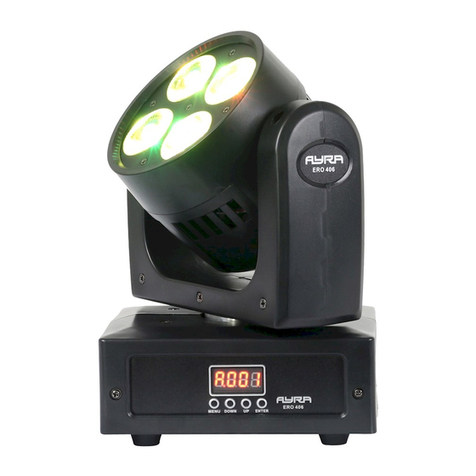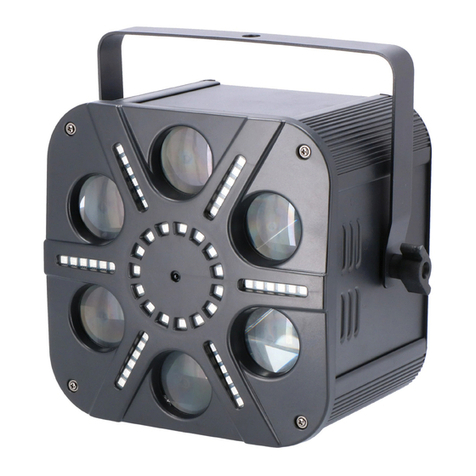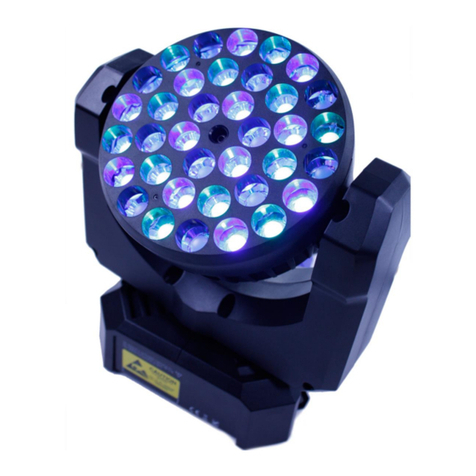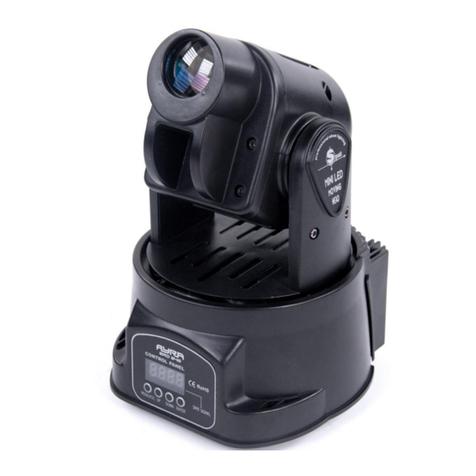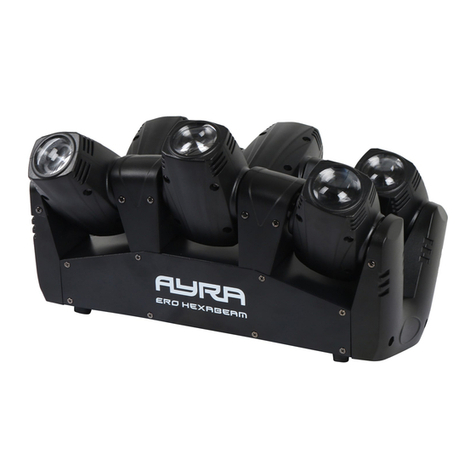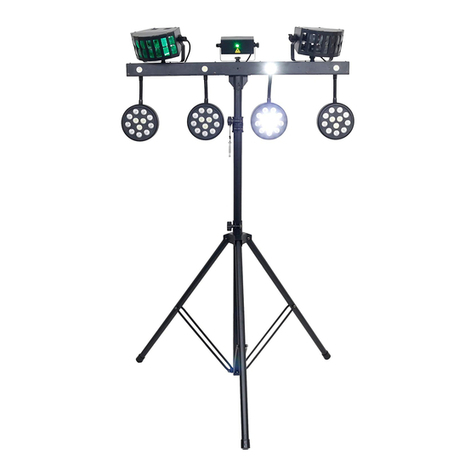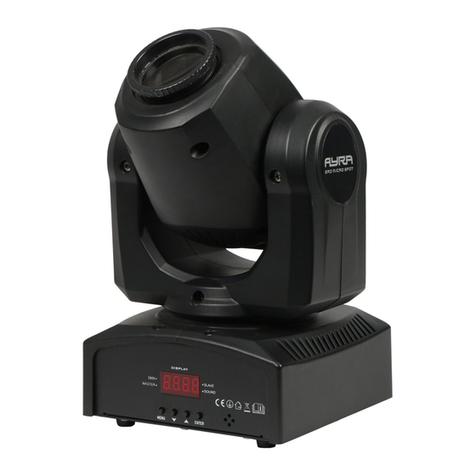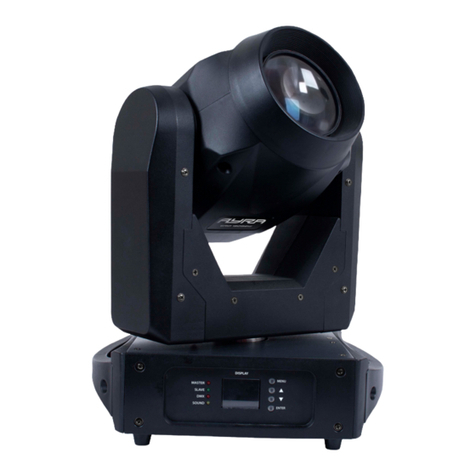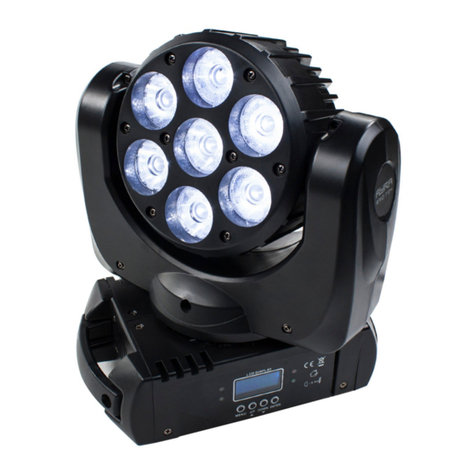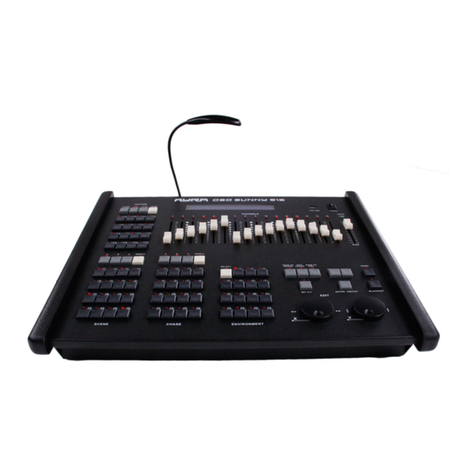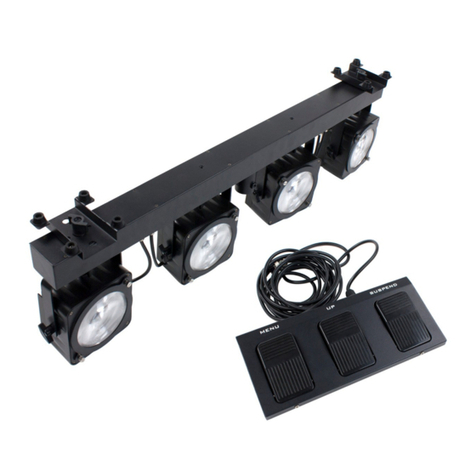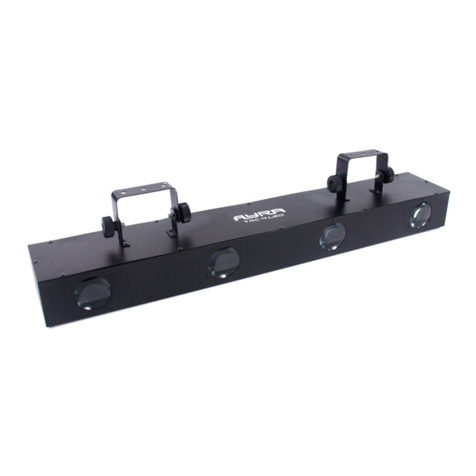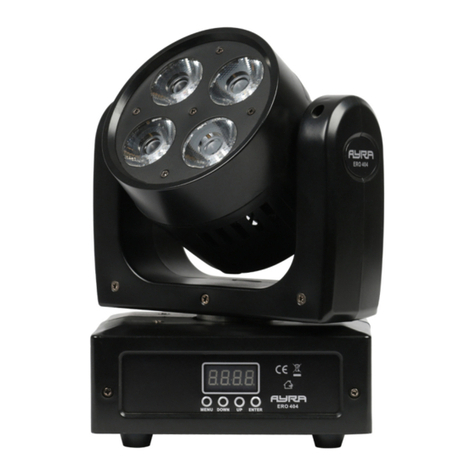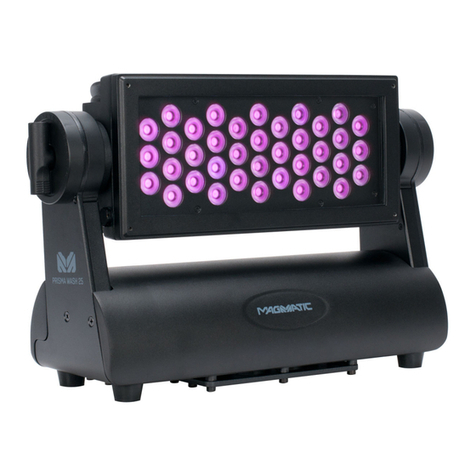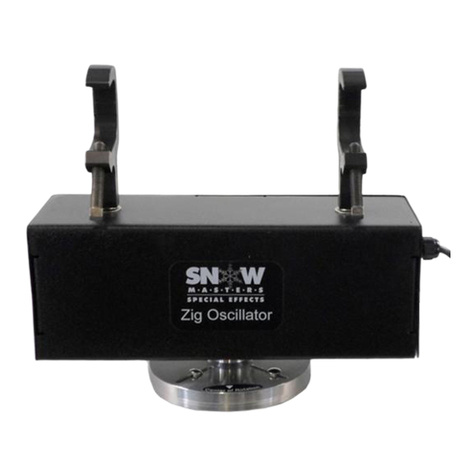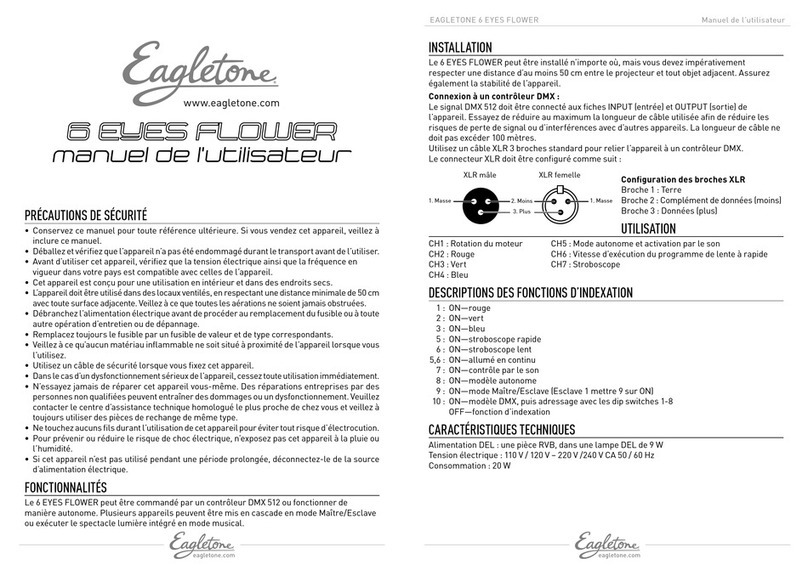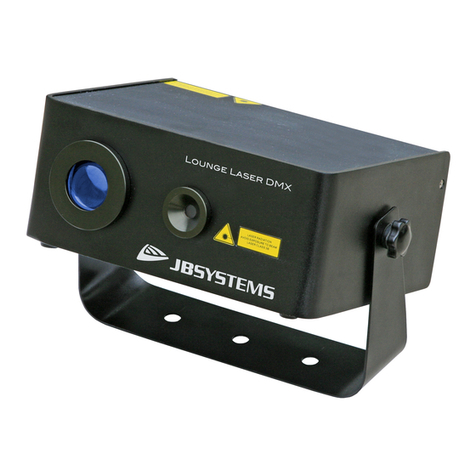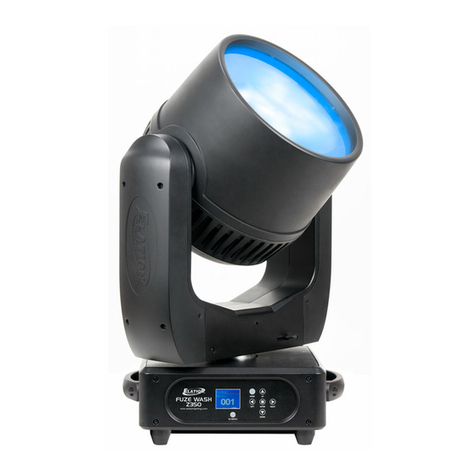An explanation of all available functions can be found below:
ADDR: With this function, you can determine the MX start address of the device. Set it channel 001, and
the device will respond to MX channel 1. Set it to channel 003, then the device will respond to MX
channel 3 and so on.
CHND: This device can operate with various MX channel modes. If your MX circuit is reasonably full with
devices and you do not need extensive control over the functions, a concise channel mode can be selected.
It is also possible to select a more extensive channel mode, making more channels available for the control
of several separate functions.
SLND: Using the Master / Slave Mode, it’s possible to connect several devices of the same type with one
another, via MX 3-pin XLR cables so that they perform exactly the same movements and functions at the
same time. Therefore, single devices do not respond individually (or chaotically) and this results in a
completely coordinated show. In the Master / Slave function, the first device in the circuit is set as the Master
and does not receive MX signal.
PLEASE NOTE: When Slave mode is activated, the device shall wait for a signal from the designated Master
device. Selecting an automatic or sound-controlled mode is then not possible! To cancel the Slave mode,
enter the ‘SLN ’ menu and select ‘NAST’. This then sets the device to Master mode and the stand-alone
functions can then be activated once more.
SHND: In this mode, one of four automatic programmes can be selected, each with fully adjustable
perameters. Here is a short description of each of the available programmes:
Fade: Slow colour fade with adjustable speed. One colour blends smoothly into the other.
Show: Sound / Music-controlled mode. The device is synchronised and reacts to sound picked up by the
integrated microphone and microphone sensitivity level.
Colo: Choose from one of the in-built static colour presets.Here, the dimmer level can be set between 0%
and 100% after confirming the colour selection by pressing ‘Enter’.
Jump: Alternate between diverse colours. One colour preset jumps to the next colour preset in one go.
SOUN: Here, the in-built microphone can be set to On or Off.
SENS: This mode allows you to set the sensitivity of the in-built microphone. The further the device is
installed from the sound-source, the higher the sensitivity of the microphone needs to be so that the sound is
registered and the device responds accordingly and in time to the music. The microphone is able to
withstand high sound pressure. However, if the sound is loud and the sensitivity is high, the microphone will
find it more difficult to register the beat. Experiment with the sensitivity and distance from the positioning of
the device to make sure you’re getting the best possible signal and optimum performance.
DNST: Use this function to set what the moving head will do in the event of MX signal drop-out or loss.
When set to Master mode, the device shall start an in-built programme. In the LAST mode, the device
remains in the last active MX command received. In the Blackout mode, all settings return to zero and that
device no longer moves or gives light.
LED: When the LE display is not in use, it can be switched off. By setting ‘LE ’ to ‘Off’, this will prevent red
symbols from illuminating when the device is being used in dark spaces. If you press of the menu buttons,
the display shall immediately light up and show all necessary information. If the display is not used, it shall
automatically switch off again within 30 seconds.
D SP: This function is useful when the device is suspended and the display screen is upside down. Use this
function to flip the screen so that it can be easily read when the device is suspended.
REST: When this function is activated, the device will be restarted. This has the same affect as turning the
power off and on again. When it is reset, the device will recalibrate, reboot and return to the last selected
operating mode or MX signal (if detected).
The information in this user manual is subject to change at any time without notice.
Version: 1.0 Date of creation and author's initials: 07-10-2019 RV Revision date and author's initials: -

